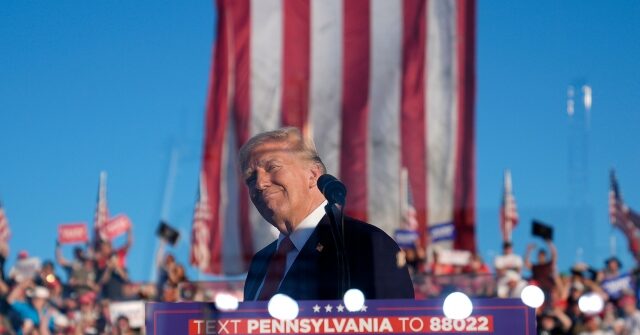Former President Donald Trump held a rally in Butler, Pennsylvania, revisiting the location of a near-assassination attempt he experienced earlier in July. As he engaged with his audience, Trump warned of formidable challenges ahead from Democrats and the far-left, especially with the critical midterm elections just a month away. He expressed optimism about the future, stating, “We stand on the verge of the four greatest years of the history of our country,” and emphasized his intent to “turn it around so fast that your head will spin.” His rhetoric painted a picture of imminent victory on Election Day, asserting that this success would allow the nation to reclaim its promises and realize its potential.
Making his case for the upcoming elections, Trump suggested that the Democrats would resort to aggressive tactics in an attempt to undermine their chances. He insinuated that they would deploy various “bombs”—figurative political attacks—against him and his vice presidential pick, Sen. JD Vance of Ohio. Trump characterized this relentless assault as indicative of their desperation, suggesting that “we’ve almost become immune to it.” His remarks resonated with his supporters, as he aimed to galvanize them for the battles ahead while asserting that the Democrats’ policies, particularly concerning immigration and gender, do not reflect the values of most Americans.
Addressing the audience’s concerns, Trump highlighted his opposition to progressive policies, particularly those related to immigration and gender identity. He ridiculed the concept of open borders and criticized policies that permit transgender individuals to participate in sports that align with their gender identity. By framing these issues as harmful or nonsensical, Trump reinforced the sentiment that he and his supporters represent traditional American values, in contrast to what he described as radical left ideologies.
Moreover, Trump introduced a sobering narrative about the threats facing the nation, warning of an “enemy from within.” He asserted that this internal threat, represented by certain political leaders and policies, poses a greater danger to the United States than foreign adversaries, including Russia, China, and North Korea. Trump argued that having an incompetent president can exacerbate these threats, as he emphasized the necessity of having strong leadership capable of addressing both internal and external challenges effectively.
As the rally progressed, Trump’s rhetoric about the “enemy within” served to galvanize his base, framing the political landscape as a struggle between good and evil. The implication was clear: the stakes of the upcoming elections were monumental, with the future of the nation hanging in the balance. By creating a dichotomy between his vision for America and that of his political opponents, he aimed to rally his supporters around a shared cause, encouraging them to see themselves as part of a larger movement working to restore America to its purported former glory.
In conclusion, Trump’s Butler rally epitomized his campaign strategy as he took to the stage to connect with his base, projecting hope and fortitude while also cautioning against the perceived threats posed by the left. With the elections looming, he called for unity and action, underscoring his belief in the potential for transformative change if voters rally behind his vision. By positioning himself as the bulwark against radical policies and reaffirming traditional values, Trump aimed to energize his supporters as they prepare for the electoral battle ahead.

